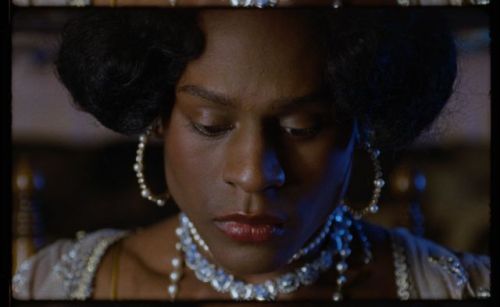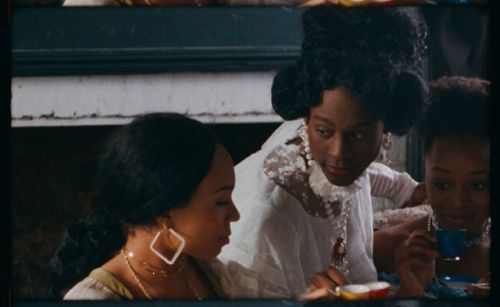A speculative vision of historical figures and events, Salacia unfolds in the style of Black fantasy
A speculative vision of historical figures and events, Salacia unfolds in the style of Black fantasy and folktales, such as those found in Virginia Hamilton’s The People Could Fly: American Black Folktales (1985). The film follows Mary Jones, a Black trans woman and sex worker who lived in SoHo in the1830s. In the film, Jones navigates brutal systems of racism and transphobia, including incarceration at Castle Williams, located on present-day GovernorsIsland. A meditation on the intergenerational trauma of displacement, the film begins by imagining Jones within the free Black land-owning community Seneca Village and culminates by foreshadowing the village’s destruction through eminent domain to build Central Park. In Roman mythology, Salacia is the goddess of salt water, who rules over the depths of the ocean along with her husband Neptune—a poignant reminder of the lasting impact of the transatlantic slave trade.Tourmaline (American, born 1983). Stills from Salacia, 2019. Video, color, sound; 6 min., 4 sec. Co-commissioned by the Brooklyn Museum and High Line Art, presented on the High Line by Friends of the High Line and the New York City Department of Parks and Recreation. © Tourmaline -- source link
Tumblr Blog : brooklynmuseum.tumblr.com
#nobodypromisedyoutomorrow#stonewall50#salacia#tourmaline#video#short film#black fantasy#folktales#virginina hamilton#mary jones#sex worker#soho#history#racism#transphobia#incarceration#castle williams#governors island#intergenerational trauma#displacement#seneca village#central park#mythology#goddess#salt water#ocean#neptune#slave trade

